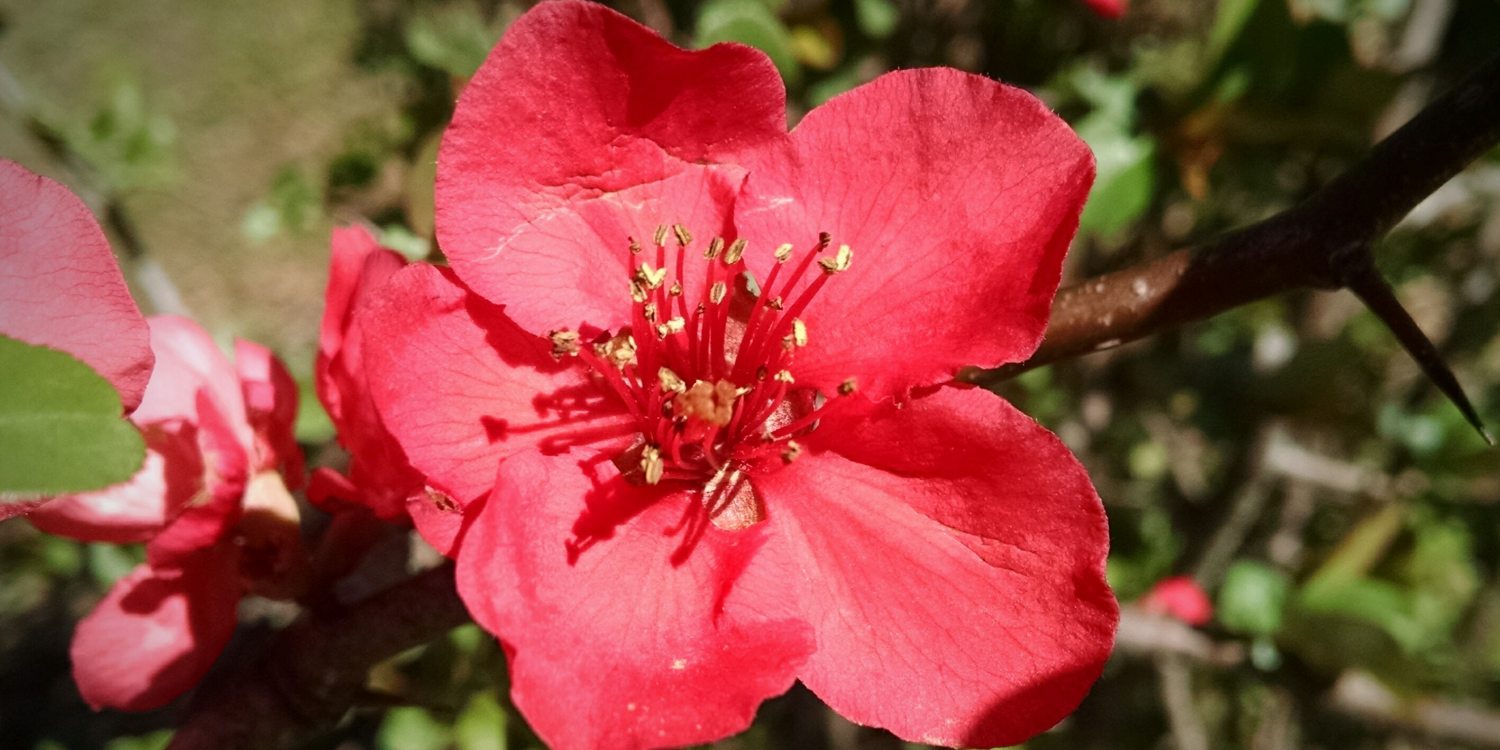
I’ve been fascinated with plants since I was a child. From my earliest memories, I can recall exploring in the woods, traipsing through undergrowth, building forts with sticks and twigs, admiring wildflowers, and feeling a profound sense of peace and tranquility in the presence of plants. They’ve always been a part of my life to one degree or another, and as I’ve gotten older I’ve come to appreciate their role not only in my own life but in society in general.
Health Benefits
One aspect of my appreciation has increased recently, and that is the health benefits of plants. I’ve discussed in a prior article how I’ve dealt with obesity after a period of poor diet in my twenties. Recently I’ve been beset with a number of health issues, all of which have been daunting and have prompted me to take a closer look at my diet and my intake of leafy green vegetables.
For the record, I’ve never been a big fan of leafy green vegetables. Of all my siblings, I was the one most likely to spit out every last green on my plate, and this was before I even knew my colors. Nonetheless leafy green vegetables have significant concentrations of fiber, water, vitamins, trace minerals, and omega-3 fatty acids which are all necessary for good health.
Though most of my leafy green vegetables come from my local grocery store, I’m nonetheless adding leafy green vegetables from wild plants in my yard as well. What follows is a brief synopsis of a few of them.

Dandelion
Dandelion (Taraxacum officinale) is one of the most easily recognizable and ubiquitous wild plants in the world. Consequently it’s the perfect place to start.
In addition to being incredibly hardy — to the point of being nearly ineradicable in most yards — dandelion is also hugely beneficial for a number of other reasons. It has a reputation for being one of the most powerful liver tonics in Western herbalism, assisting in recovery from conditions such as jaundice and cirrhosis. This effect is largely facilitated by dandelion’s ability to stimulate the secretion of bile, which provides the added benefit of helping to regulate digestion and excretion. Finally it acts as a diuretic, facilitating the elimination of toxic metabolites through the kidneys.
Though the taste of dandelion is notoriously bitter, dandelion leaves can be combined with more flavorful greens to make a salad or wrap with added nutritional and medicinal benefit. As with most herbs, dandelion root is the most potent part of the plant and is commonly found in liver detoxification formulas of every conceivable stripe. The most common and enjoyable preparation of the root is a roasted tea, which tastes remarkably similar to coffee. The flower heads are also supposed to be very tasty when fried in a light batter.
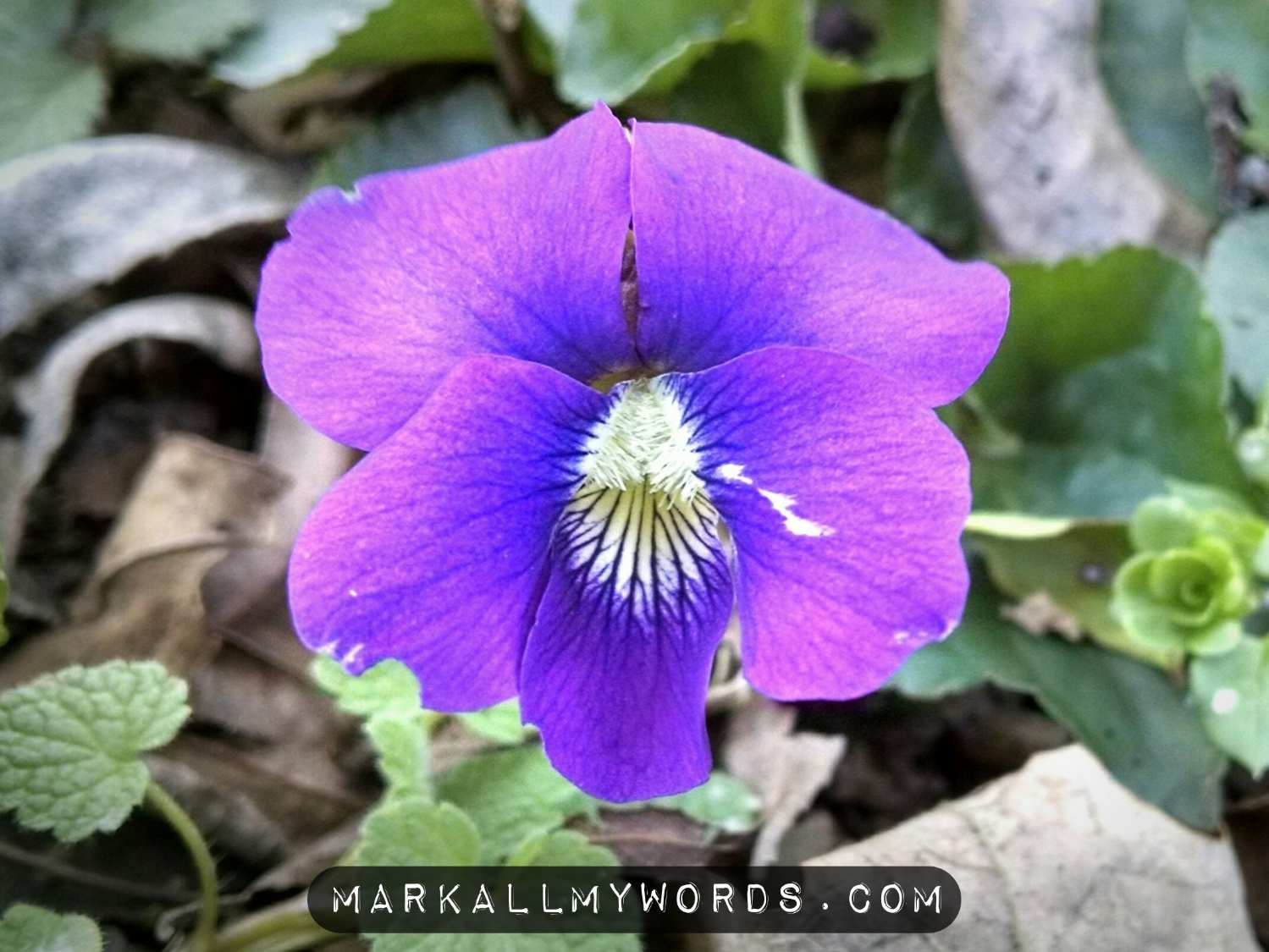
Blue Violet
Blue violet (Viola sororia) is another common wild plant frequently found in most yards. The vibrant purple blossoms are unmistakable, and their appearance constitutes one of the first signs of spring. Though the health benefits of blue violet aren’t nearly as significant as those of dandelion, there are some. Blue violet has a reputation for being helpful in combating upper respiratory complaints such as cough, sore throat, and bronchitis. The mucilage in the leaves is helpful in reducing hemorrhoids and varicose veins. And the blossoms, when prepared in the form of a syrup, have historically been used as a laxative.
The leaves of blue violet are rich in vitamins A and C but are tough, stringy, and slightly pungent. As a result they may be an acquired taste. The blossoms are very mild in flavor and can be used for a natural food coloring when boiled lightly in a liquid medium. They can also be used as a colorful garnish in salads or wraps. The roots are toxic, however, and should be avoided at all cost. In addition, the leaves and stems of blue violet are difficult to differentiate from other species, many of which are poisonous to humans. As a result it’s best to wait for the blossoms to appear before trying these.
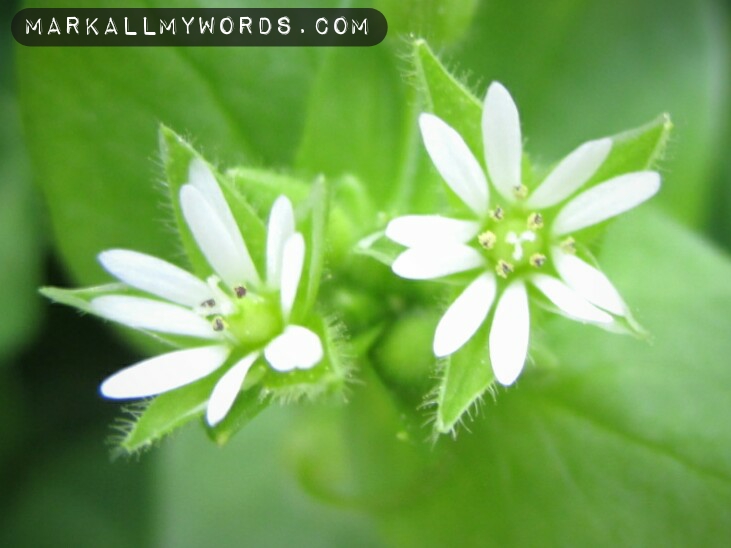
Chickweed
Chickweed (Stellaria media) is easily the most prolific wild plant in this article and one of the most prolific in the entire plant kingdom. Producing up to five generations in a single growing season, chickweed is able to overtake an entire yard in the space of two or three months and may be considered a noxious weed in some areas for this reason. However it also provides a number of health benefits that may offset this point, including a reputation for treating constipation, cough, and skin complaints. It is additionally rich in omega-3 fatty acids, making it a significant anti-inflammatory herb that may help with rheumatism and progressive cognitive decline.
The leaves and stems of chickweed are the tastiest parts of the plant, lending a subtle creamy flavor and crisp texture to any salad or wrap. The flowers and seeds are edible but very small and consequently don’t provide much in the way of nutrition or flavor. I haven’t read anything to indicate that the roots are toxic to humans, but they should be avoided if only because they’re wispy, shallow, and have presumably negligible nutritional or medicinal benefit.
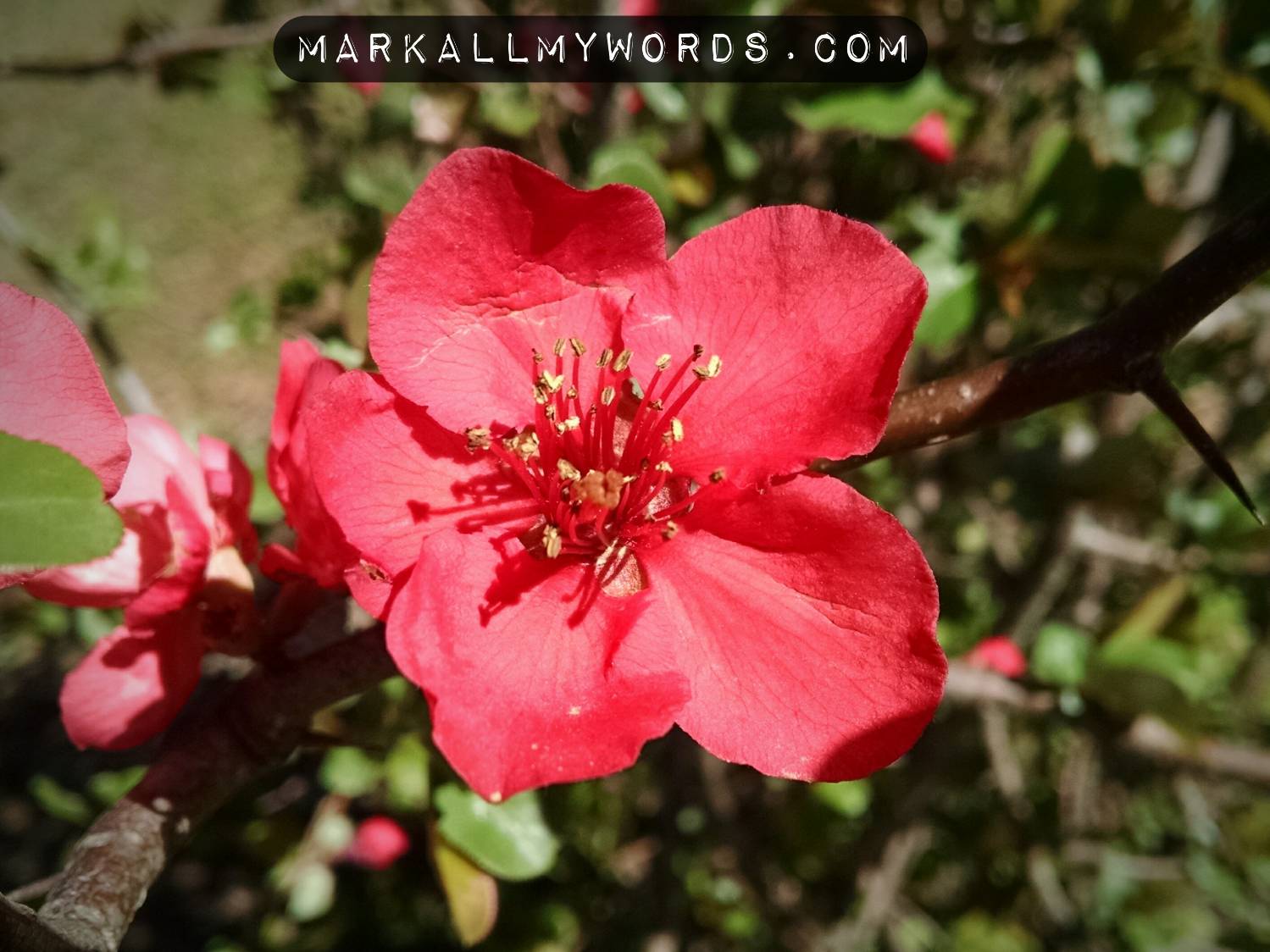
Flowering Quince
Flowering quince (Chaenomeles speciosa) isn’t terribly common in the wild but does have a tendency to hold its ground firmly once planted, providing a thorny barrier that explains its frequent use as a border shrub. The blossoms of flowering quince are quite distinctive with their vibrant red or pink petals which open even before leaves appear on the plant.
Though quince is rarely used in Western herbalism, it’s much more widely used in Traditional Chinese Medicine, where its prescription is indicated in cases of neuralgia, depression, and migraine headaches. At least one clinical study has empirically confirmed quince’s ability to regulate dopamine reuptake, explaining at least in part its ability to counteract depression. There is even evidence to suggest that it may have a role to play in the development of treatments for Parkinson’s disease.
The only part of the plant recommended for use by humans is the fruit, which is nonetheless extremely tart and should be cooked before eating. Resembling a small, yellow-green, slightly shriveled apple, quince fruit is very tasty when used to make jams, jellies, or preserves. Additionaly, liquid extracts of quince have been used safely in laboratory settings and have provided the previously mentioned evidence of efficacy against depression.
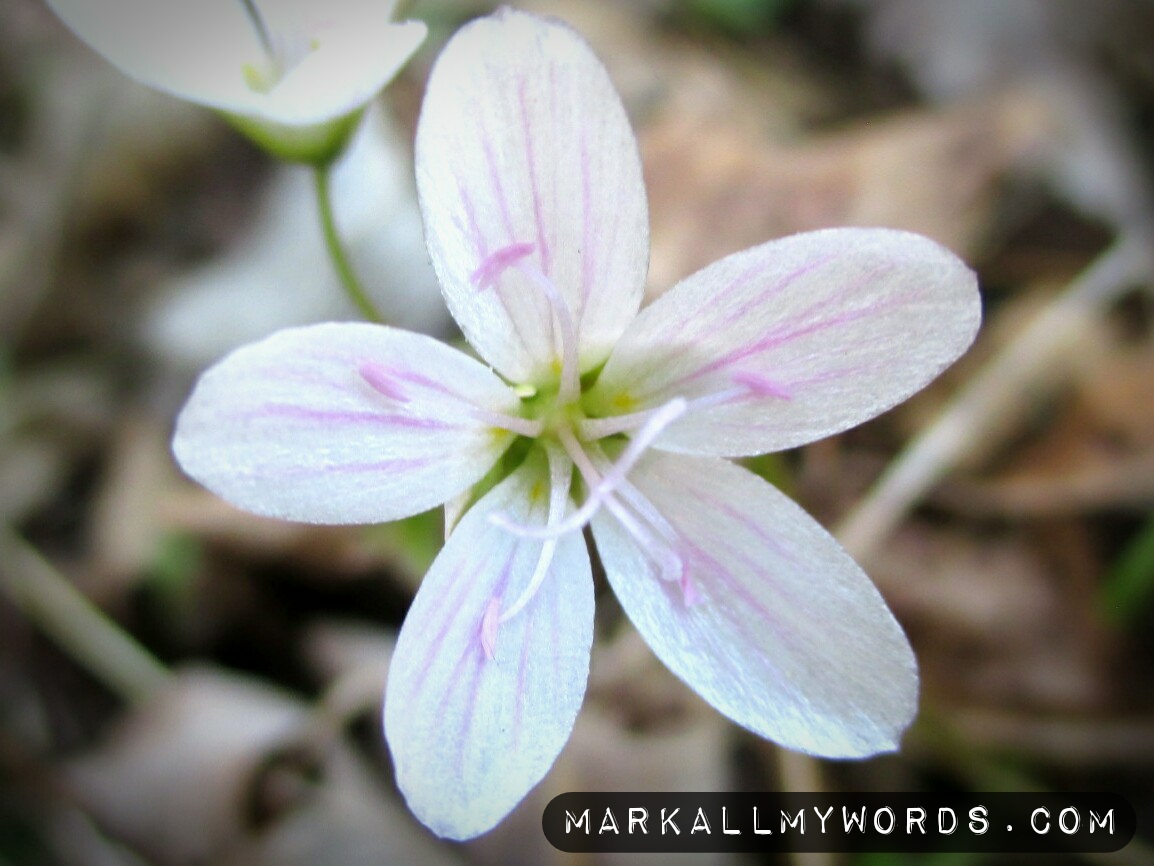
Spring Beauty
Spring beauty (Claytonia virginica) is a small, delicate, almost indiscernible wild plant that appears in early spring while most other vegetation is still dormant. Spring beauty’s flowers are white with pink stripes and have petals in clusters of five. The stamens often form looping or spiral shapes and terminate in bright pink anthers. Though there are few recognized medicinal uses of the plant, spring beauty has been used historically in cases of juvenile epilepsy and to aid in contraception.
The most commonly eaten part of spring beauty is the root, which is supposed to have a faintly nutty, savory flavor. The root can be eaten raw or cooked, though its flavor is improved by the cooking process. The leaves and flowers of spring beauty are also edible, providing a garnish for salads or wraps in much the same manner as chickweed, dandelion, and blue violet.
Considerations for Use
Despite the nutritional and medicinal benefits of the previously mentioned wild plants, there are a few considerations that should be borne in mind before gathering them.
The first of these regards possible sources of contamination, specifically: 1) herbicides, 2) highway runoff, and 3) agricultural waste. Herbicides are frequently toxic and carcinogenic and should be avoided at all cost; in practice therefore it’s necessary to gather wild plants from land which has been allowed to grow without the use of chemicals. Highway runoff is laden with toxic heavy metals and should also be avoided; the best way to do this is to gather from areas that are distant from roads and commercial thoroughfares. Agricultural waste is often laden with antibiotics and hormones and should similarly be avoided; the best way to do this is to gather from areas that haven’t been under commercial cultivation within the past ten years.
The second consideration to bear in mind is the need for accurate identification. Though the majority of cases of misidentification result in nothing more than indigestion, diarrhea, or vomiting, there are cases in which the results can be seriously damaging to your health. In the worst cases, misidentification may result in heart palpitations, internal bleeding, paralysis, or death. Before consuming a wild plant, it is therefore necessary to ensure that the plant in question is accurately identified as a species safe for human consumption. The best way to do this of course is by using a proper field guide and paying close attention to details of plant morphology before consuming it. Nonetheless, any attempt to eat a wild plant is at your own risk.
The third consideration to bear in mind is the health of the plant community. For the purposes of this article, I’ve made sure to include only wild plant species that are abundant and face no imminent risk of extinction. If, however, you happen to stumble upon a wild plant species that is threatened, endangered, or simply very scarce in a given environment, the best thing to do is simply leave it. There are so many tasty, abundant, and medicinal wild plants in the world that there’s no justification for threatening the survival of an entire species in service to one’s own appetite.
A True Appreciation of Plants
In the end, the decision to eat, or merely observe and appreciate, wild plants is ultimately your own. When done with proper consideration for safety, health, and biodiversity, it can be hugely rewarding.
From my own personal experience, I can attest that eating wild plants has changed my relationship with the natural world. Where once I used to see nothing more than weeds and undesirable vegetation, I now see a wealth of potential food sources that possess far more capacity to heal the body than any processed or refined food ever could. I also see a community of life that is ready, willing, and able to help us, if only we will respect and partake of them responsibly.
This realization has increased my gratitude to the natural world and my own sense of responsibility to the species on whom I depend for food. Their life is my life. What I do to them, I do to myself at some point down the road. And this is where the mindset of true sustainability begins.
Reblogged this on pearl girl revolution and commented:
THIS IS NICE IM GOING TO LOOK FOR THESE !
LikeLike